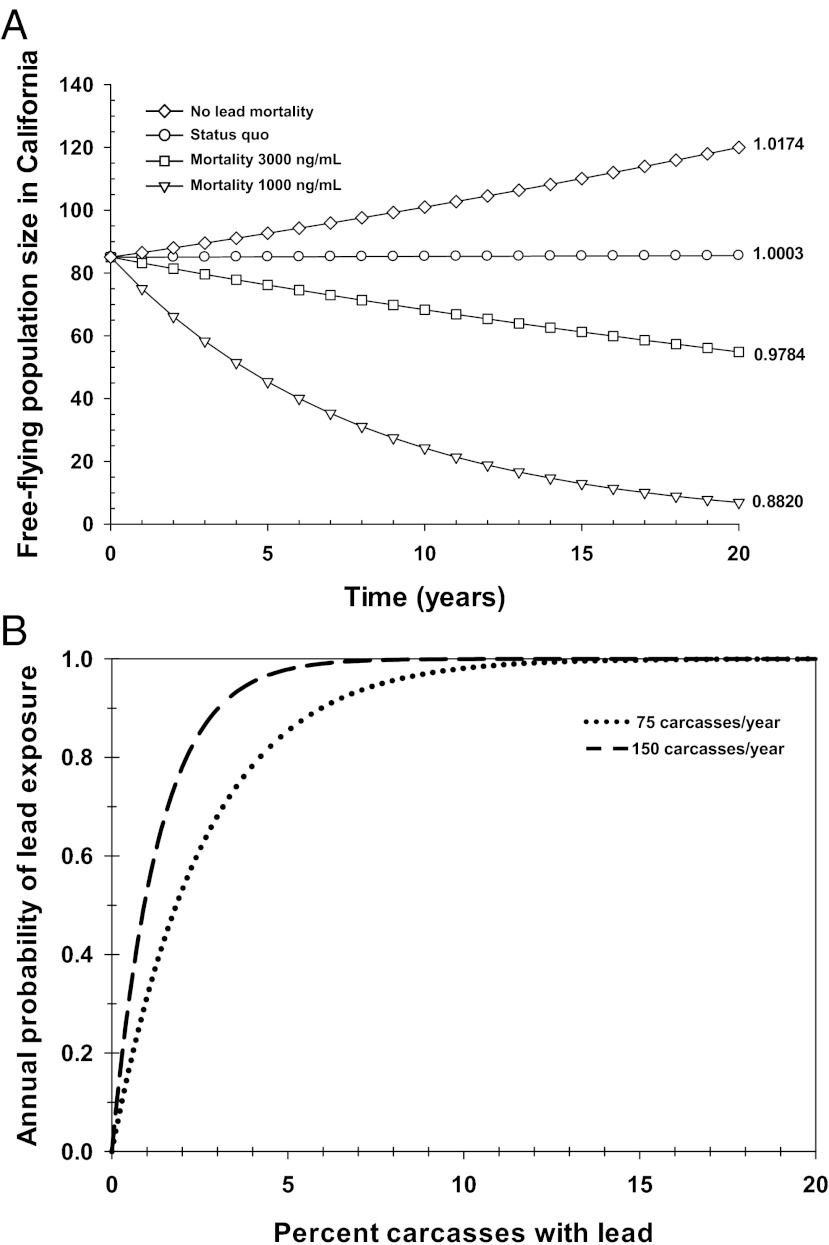Fig. 4.
Lead poisoning is prohibiting California condor population recovery and even low carcass contamination rates will result in high probabilities of lead poisoning. (A) Projected condor free-flying (i.e., wild) population size in California over 20 y under four scenarios of management and without consideration of captive-reared releases: (i) status quo (current interventions to mitigate lead poisoning continued), (ii) cessation of interventions to mitigate lead poisoning with mortality occurring at blood lead ≥ 3,000 ng/mL, (iii) cessation of interventions with mortality occurring at blood lead ≥ 1,000 ng/mL, or (iv) no lead-related mortalities. Projections start with 85 birds at year 0 (free-flying population in California in 2010). Numbers represent annual population growth rate for each population projection. (B) Annual probability that a condor encounters one or more lead-poisoned carcasses, assuming that a condor eats from 75 to 150 carcasses/y [1 − (1 − probability of contamination in a carcass)N, where N is the number fed on in 1 y]. California condors are estimated to feed on between 75 and 150 carcasses per year based on the estimate in the work by Snyder and Snyder (33) that a condor needs to feed every 2–3 d to maintain a healthy weight.

